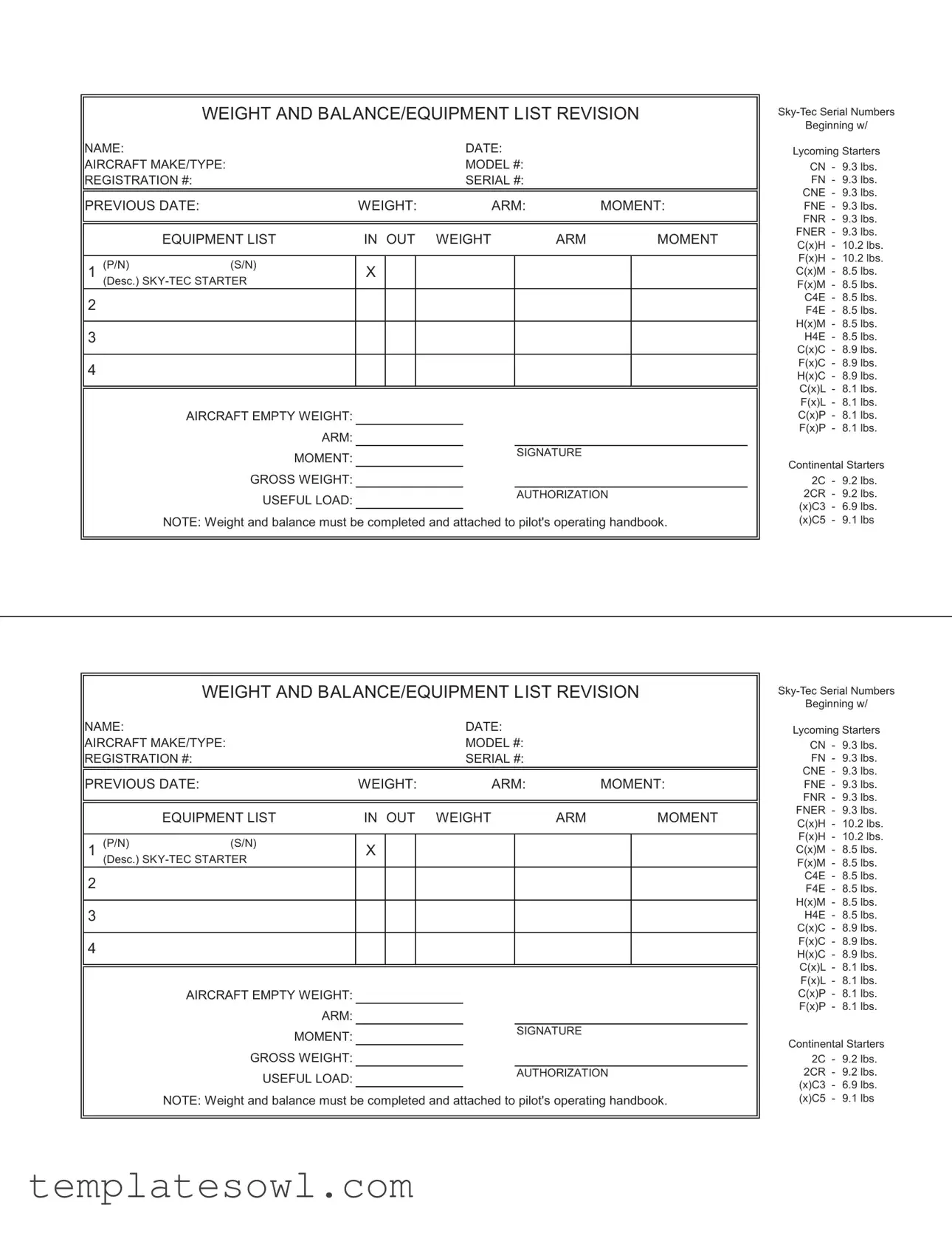What is the purpose of the Aircraft Weight Balance form?
The Aircraft Weight Balance form ensures that the aircraft is balanced correctly and meets safety requirements. Proper weight distribution is crucial for maintaining stable flight and preventing handling issues. This form is a record of the aircraft's weight and balance data, helping pilots operate safely.
What information is required on the form?
You need to provide details such as the aircraft make, type, model number, registration number, serial number, and previous weight balance date. Additionally, the form requires the aircraft's empty weight, gross weight, useful load, arms, and moments for various equipment included in or removed from the aircraft.
What does the term 'moment' mean in this context?
In aviation, 'moment' refers to the rotational force about the center of gravity. It is calculated by multiplying the weight of an object by its distance from a reference point, usually represented as the arm. Understanding the moment is essential for ensuring that weight is distributed evenly across the aircraft.
How often should I fill out a new form?
A new Aircraft Weight Balance form should be completed whenever there are significant changes to the weight distribution on the aircraft. This includes adding or removing equipment, changing fuel loads, or altering the configuration of the aircraft. Regular updates help maintain accurate weight and balance records.
What should I do if I find discrepancies in the recorded weights?
If you discover discrepancies in the recorded weights, address them immediately. You should verify the accuracy of the current weight and balance data and make corrections on the form. Ensure that all changes are properly documented and, if necessary, consult with a qualified technician for assistance.
Is a signature required on the form?
Yes, a signature is required on the Aircraft Weight Balance form. This signature confirms that the weight and balance calculations have been completed accurately. It serves as an acknowledgment of responsibility for the provided data, contributing to safer flight operations.
What happens if I don't attach the form to the pilot's operating handbook?
Not attaching the form to the pilot's operating handbook could result in unsafe flying practices. The weight and balance information is essential for flight planning and performance calculations. Failing to provide this documentation may lead to regulatory issues and compromises safety during flight operations.
Where can I find information about specific equipment weights?
Specific equipment weights can be found on the Aircraft Weight Balance form, which includes a list detailing the weight of various components such as Sky-Tec and Continental starters. Refer to this section to ensure accurate calculations when completing the weight and balance data.

